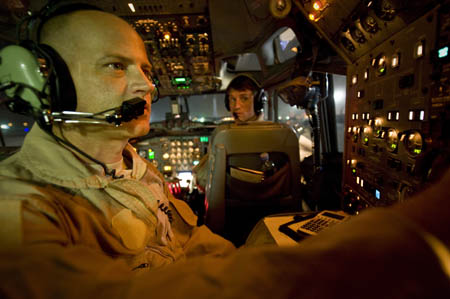 The top Air Force general in Afghanistan said he doesn’t see the December 2014 withdrawal deadline for US combat forces as the end of the Air Force’s presence there. “We’re still kind of in the middle,” Maj. Gen. Kenneth Wilsbach told the Daily Report on July 20 via a telephone interview from Kabul. The United States and its NATO partners plan to have roughly 450 to 500 air advisors in theater until 2017, at which point the Afghan air force is expected to have at least a foundational capability and, in some cases, will be up to full operational capability, said Wilsbach. Right now, the AAF is about 6,600 strong, but it should ramp up to about 8,000 by 2017, he said. The biggest challenge is finding Afghan airmen who are proficient in English, the language in which all aviation technical orders are written, he said. Beyond that, Wilsbach said officials are still working out the details of the post-2014 picture. Like his predecessor, Maj. Gen. Jake Polumbo, Wilsbach said intelligence, surveillance, and reconnaissance would remain important as long as coalition forces continue to operate in Afghanistan. There also will be “some sort of rescue capability,” in addition to air refueling, and airlift, he said. “The big question will be what, if anything, we will have for close-air support,” he noted.
The top Air Force general in Afghanistan said he doesn’t see the December 2014 withdrawal deadline for US combat forces as the end of the Air Force’s presence there. “We’re still kind of in the middle,” Maj. Gen. Kenneth Wilsbach told the Daily Report on July 20 via a telephone interview from Kabul. The United States and its NATO partners plan to have roughly 450 to 500 air advisors in theater until 2017, at which point the Afghan air force is expected to have at least a foundational capability and, in some cases, will be up to full operational capability, said Wilsbach. Right now, the AAF is about 6,600 strong, but it should ramp up to about 8,000 by 2017, he said. The biggest challenge is finding Afghan airmen who are proficient in English, the language in which all aviation technical orders are written, he said. Beyond that, Wilsbach said officials are still working out the details of the post-2014 picture. Like his predecessor, Maj. Gen. Jake Polumbo, Wilsbach said intelligence, surveillance, and reconnaissance would remain important as long as coalition forces continue to operate in Afghanistan. There also will be “some sort of rescue capability,” in addition to air refueling, and airlift, he said. “The big question will be what, if anything, we will have for close-air support,” he noted.
Retired Col. Carlyle "Smitty" Harris, known for introducing the "tap code" by which American POWs in North Vietnam could surreptitiously communicate with one another, died July 6. Harris was brutalized by the North Vietnamese over almost eight years of captivity.